Contemplating the act of reflection through the work of Phumlani Ntuli
South African artist Phumlani Ntuli shares details about the grounding thematic concerns in his work through an interview on his recent solo exhibition A navigation guide to Kwanqingetshe
The act of reflection is a continuous one. It allows for considerations of personal and collective archival and retrieval mechanisms, and the tensions present in explorations of the past. Reflection can sometimes blur the line between the real and the imagined, with affective and physical filters mediating the resultant narrative. It can also bring to the surface moments of clarity. Multidisciplinary artist Phumlani Ntuli explores the notion of reflection intertwined with his overarching thematic investigations of black futurity and the archive in his recent solo exhibition at the Bag Factory in Johannesburg titled A navigation guide to Kwanqingetshe.
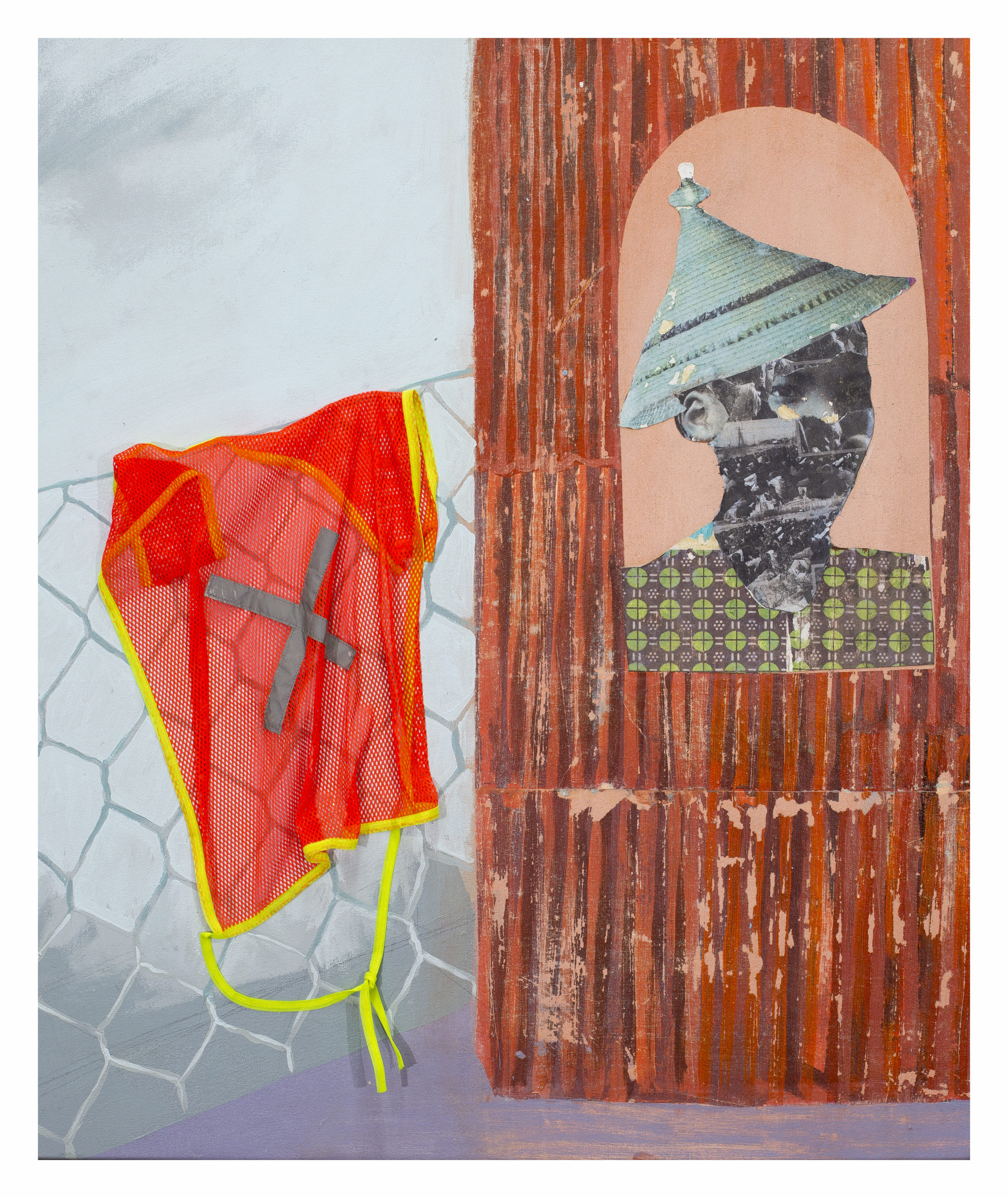
Phumlani Ntuli, The voyeur, 2021. mixed media collage, paper transfer and acrylic on canvas.
Photography by Solomon Moremong. Image courtesy of the artist.
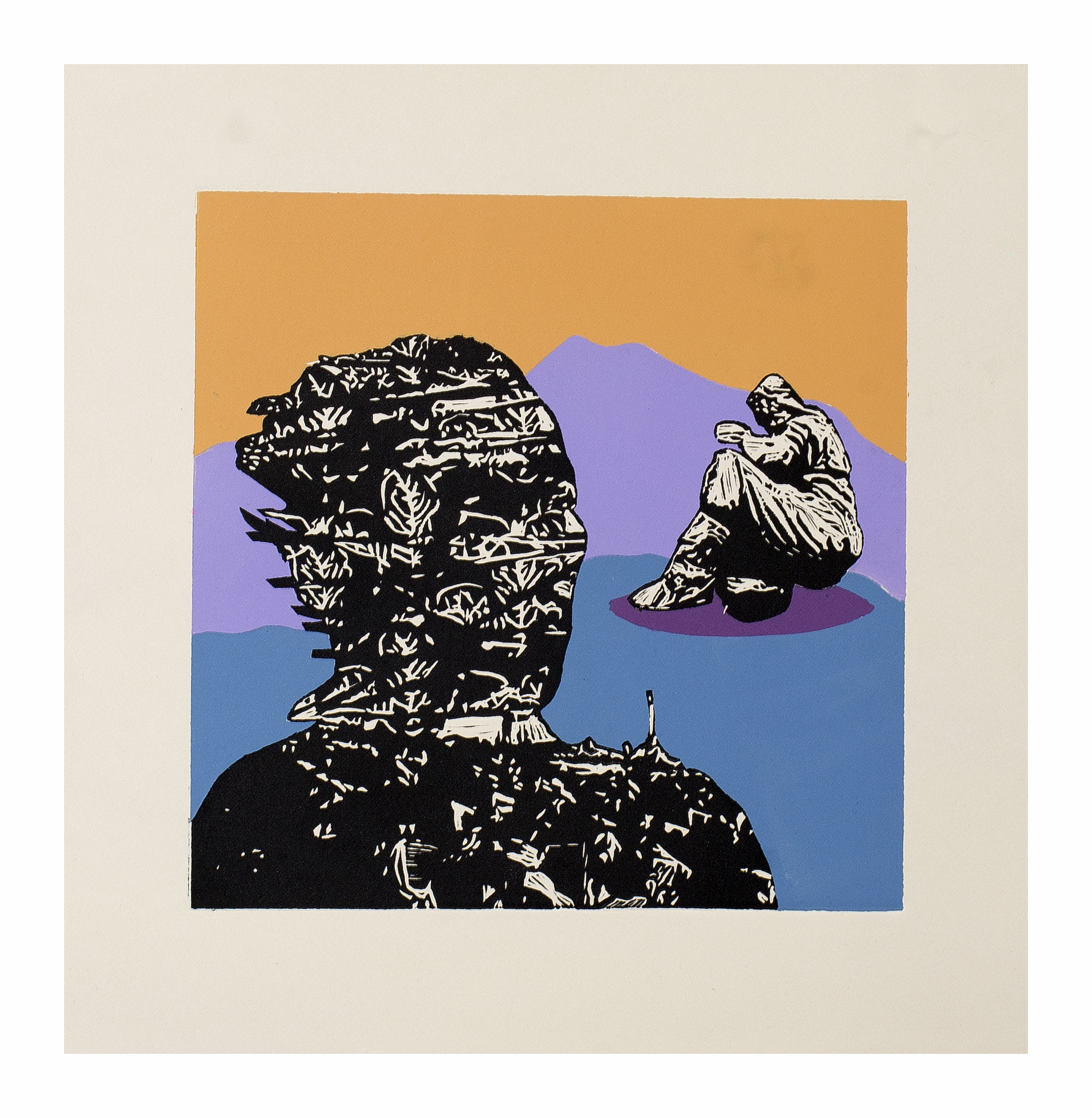
Phumlani Ntuli, Remembering Spring, 2020. Edition: 10, AP: 3, PP: 3. Lino print on 285 Fabriano paper.
Photography by Solomon Moremong. Image courtesy of the artist.
SOUTH SOUTH (SS): How do you like to describe your practice? What are important thematic considerations for your practice?
Phumulani Ntuli (PN): I describe myself as a multidisciplinary artist because I work between video installation, sculpture, collages and performance practices. My work is twofold. There is the research component part which deals with video making and performance practice. I came into video performance for example through documentation of my performances. And I thought about using documentation as a kind of work. It tended to be work in progress, because the reception of performances is normally ephemeral. So I started that as research into performance and video. Then there is the collage and sculptural work which is mostly studio-based. The difference between them is working with the public space which is mostly collaborative and working within the studio, which often happens in isolation. I kind of dabble between those spheres of work so as to attend to different ways of imaging and imagining. The continued themes I have explored in my practice have been notions of black futurity, the archive and its tensions. I consistently delve within notions of collective autobiographies and their surrounding social political conditions.
SS: How do these thematic explorations filter into the work shown in the exhibition A navigation guide to Kwanqingetshe?
PN: A navigation guide to Kwanqingentshe explores issues of identity, archiving and dispossession within a post internet era. I situate these concerns through the parallel or rather the dichotomies between fact and fiction. I am fascinated by the results which emerge when fact and fiction collide. The exhibition renders evidence-based material as it is fashioned towards fiction, particularly around the internet and social media known as “deep fake”. Some of these resided in forms that cannot actually be attained like land, but rather can be occupied. The exhibition looks at ways of occupying land, space and bodies. It attempts to navigate the itineraries of identity within a post internet era as there is an excessive taste to archiving and digitising. I look at these as a timeline, for example looking at the context of Marikana and how evidence does not necessarily protect those whom it is supposed to grant narrative and dignity too. This is seen in the work Swaving through the portholes where the future is told in the present and explored through a fictional figure I named Godide. This figure travels through “The port of the unknown”; we see him engulfed by other bodies and events which suggest memory both as a digital register and as a tangible object. Godide travels by boat which carries spiritual undertones, like casting the remains of human ashes into water. This alludes to of slave trade and issues of black bodies as commodities. However there is also grace earmarked in his posture.
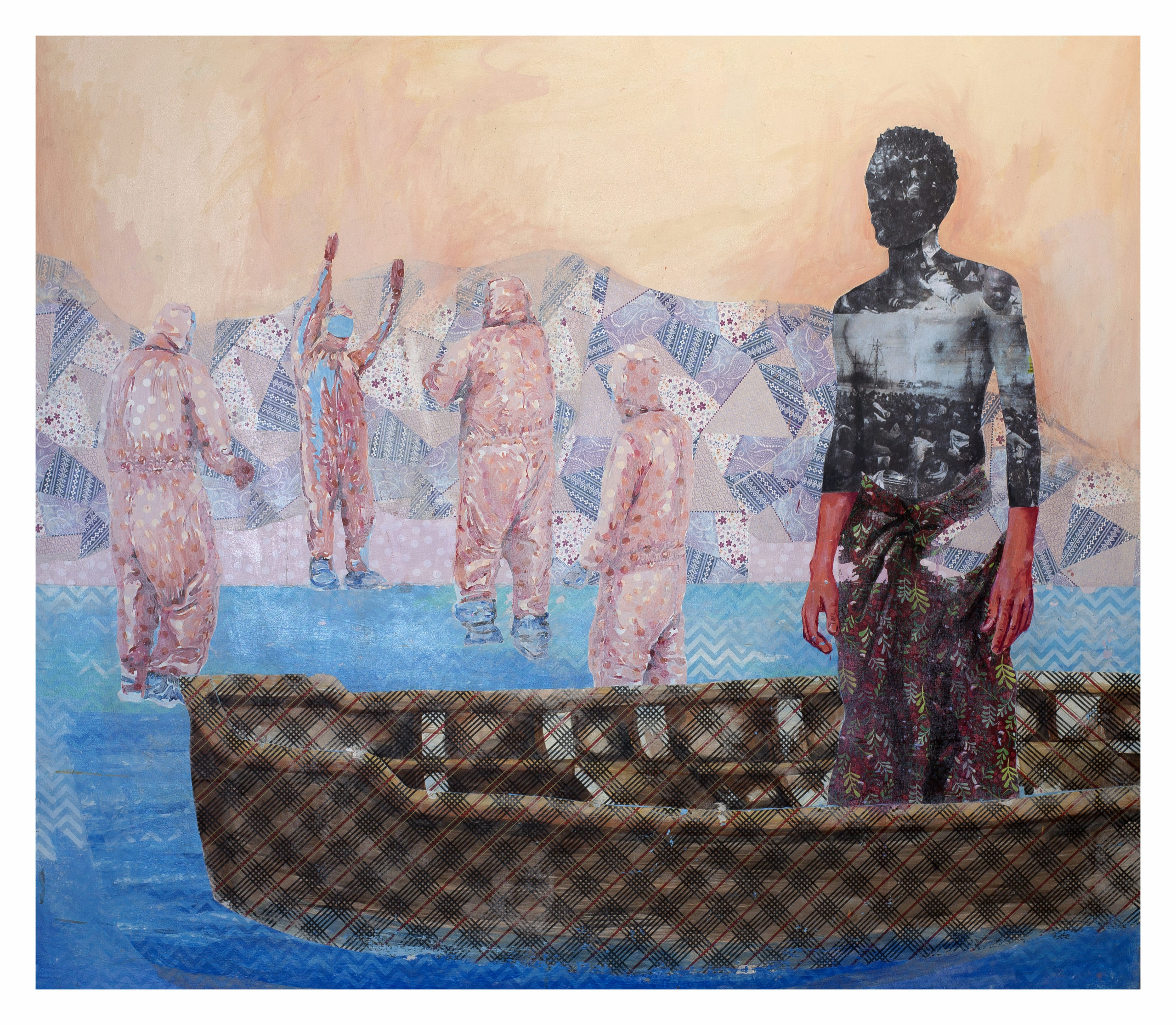
Phumlani Ntuli, Swaving through the portholes, 2021. mixed media collage, paper transfer and acrylic on canvas.
Photography by Solomon Moremong. Image courtesy of the artist.
The continued themes I have
explored in my practice
have been notions of black futurity,
the archive and its tensions.
SS: Reflection, memory and storytelling are significant foundations for the creation of the body of work present in the show. Could you share more about the inspiration for these works?
PN: The exhibition enters the remnants of time, history and memory, how it is distorted, told, stored and how memory becomes frozen through photography and video, sound and textural material. I argue that within these timelines there are other timelines which are left in the margins, that is images that speculate an unknown community, their lived experiences, their way of life. Through this body of work I attempt to bring about visibility of the present future.
SS: Often with memory, contemplation and storytelling, the real and the imagined are amalgamated in ways to relieve anxiety, address pain, and to align thoughts about ourselves with what is presented or perceived in the outer world. Could you share more about your thinking about the relationship between reality and fantasy in this work? Perhaps offering a direct reflection by describing a particular work?
PN: The collision between reality and fantasy is interesting because something happens when they meet. I think memory becomes so unreliable because it is fragmented. It’s like a piece of a puzzle or like a frame of a photograph, which isolates one pixel from reality. This fragmentary stance is explored in the work Congregants. In this work we see clone bodies of four figures and the center figure is making implied inscriptions on the land. The different gestures of each figure resolves movement which is implied in the eyes of the viewer. When looked at simultaneously all the figures would perform the same gesture. If they were all witnesses when the inscription was performed on the land, they would tell the story differently. I think that is how stories and memory can be perceived.
SS: Could you share more about the title of the show? How does it connect to your reflections on the political status of South Africa and considerations on how the pandemic has affected our lives through the mechanism of a fictional geography?
PN: ‘Kwanqingetshe’ is a Zulu term which means to be fixed as stone and to be in a static condition. It conceives of ways of succumbing to stagnation, the insecurities and the anxieties of a captured state within a pandemic and the demine of human dignity. I have always thought of the South African situation or rather the African condition as an outer world. One that can be explored through a simple exercise of turning the map downside up.
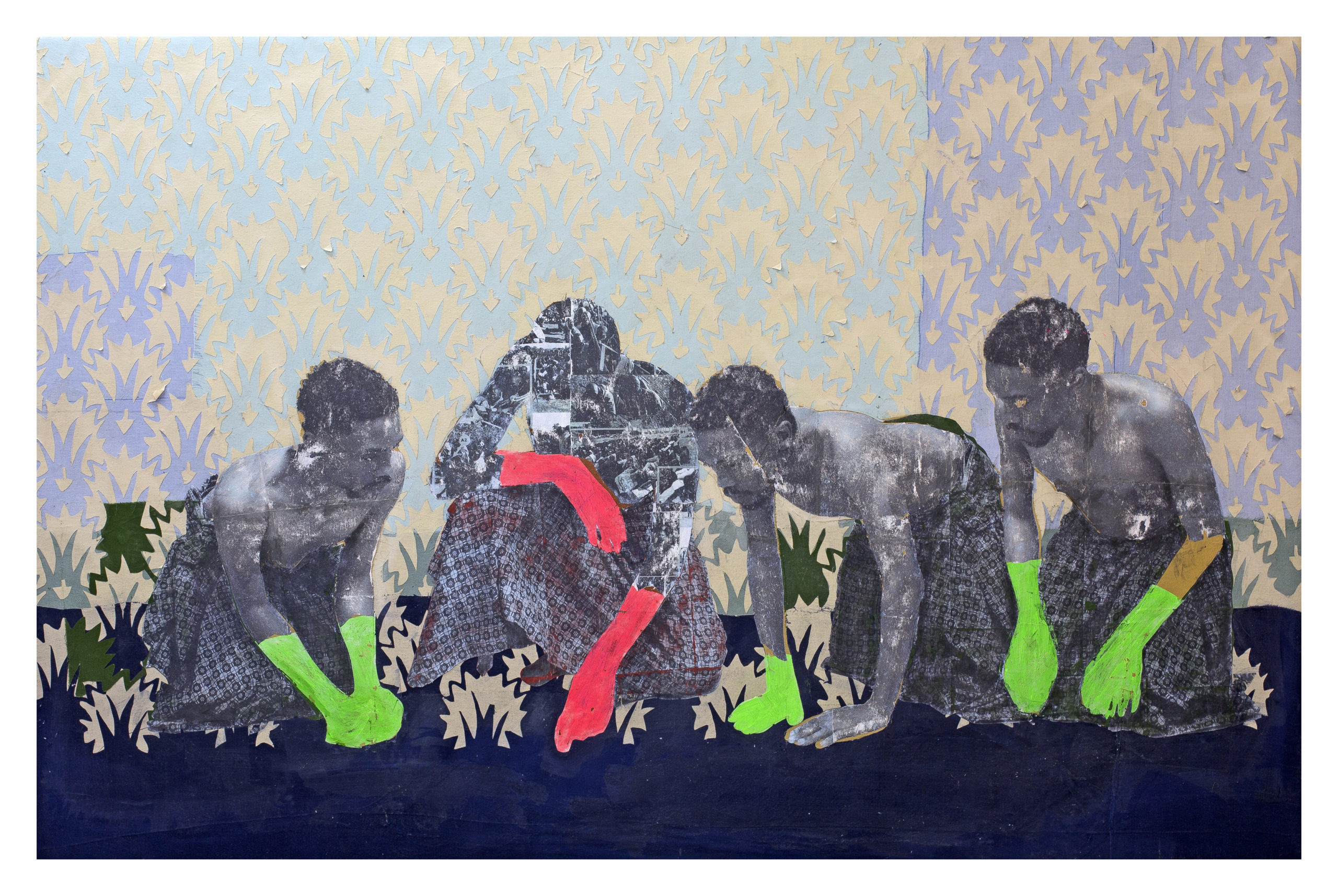
Phumlani Ntuli, Congregants, 2019. mixed media collage, paper transfer, linen and acrylic on canvas.
Photography by Solomon Moremong. Image courtesy of the artist.
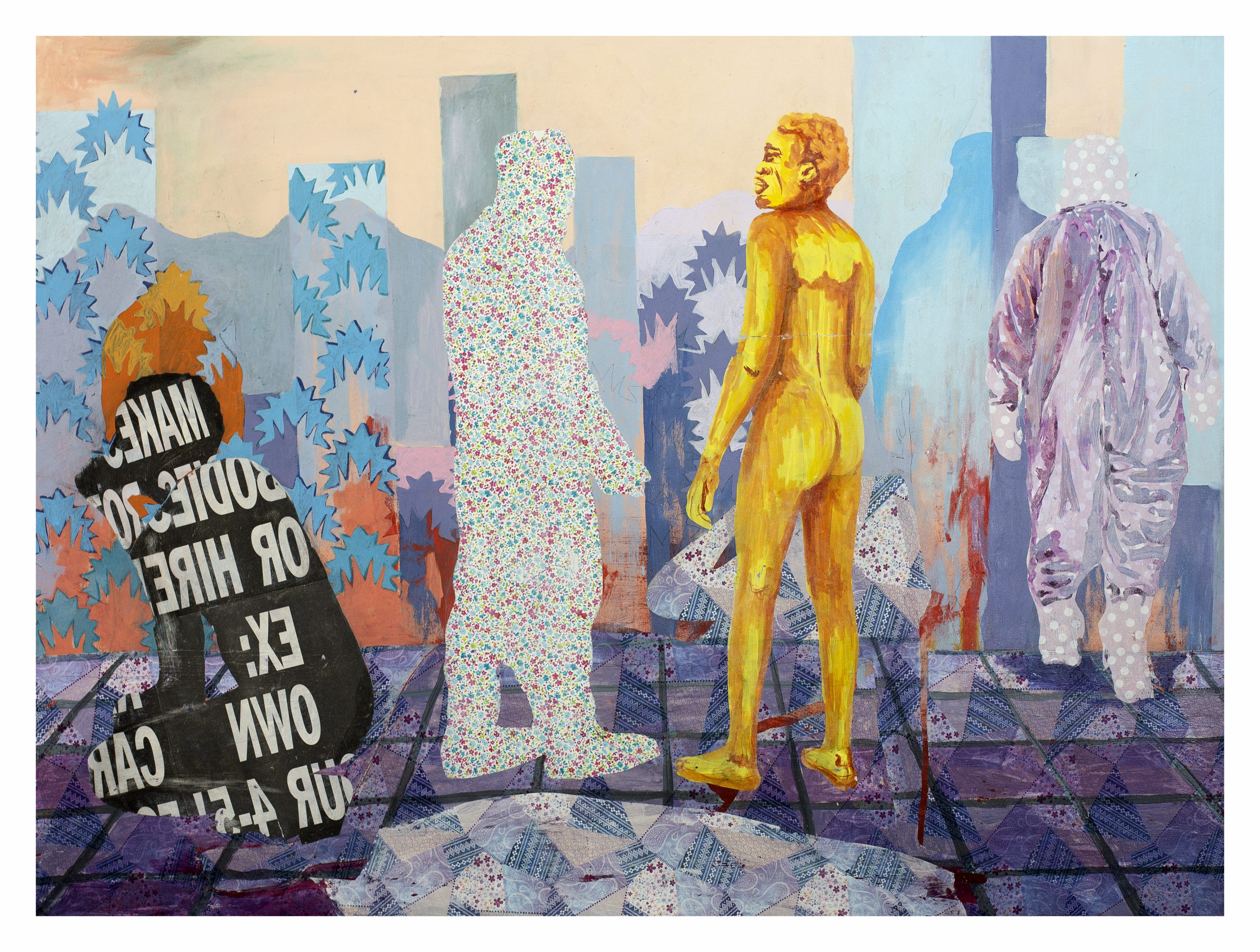
Phumlani Ntuli, Bodies for hire, 2021. mixed media collage, paper transfer and acrylic on canvas.
Photography by Solomon Moremong. Image courtesy of the artist.
SS: Who do you see as the audience for this work?
PN: I have been told that my work is playful and versatile, since I [am] multidisciplinary, using collages, performance and video installation. Seeing the work as a solo exhibition consolidates my ideas which tend to be discursive. There has also been an interest by emerging collectors who are starting to collect artworks by living South African artists. I believe my audience are already people who know my work within the arts community and largely the general South African audience who are interested in new media work that incorporates traditional and contemporary approaches.
SS: What is the significance of showing this work at the Bag Factory?
PN: The significance of showing this work at the Bag Factory at this moment is of course an important stance, since this year marks the 30th anniversary of the Artists studio. The Bag Factory as an artistic community internally and externally has touched the work and careers of many South African artists many of which I draw inspiration from such as the late Dr David Koloane and Patrick Mautloa who is a living vessel of knowledge in South Africa at the moment.
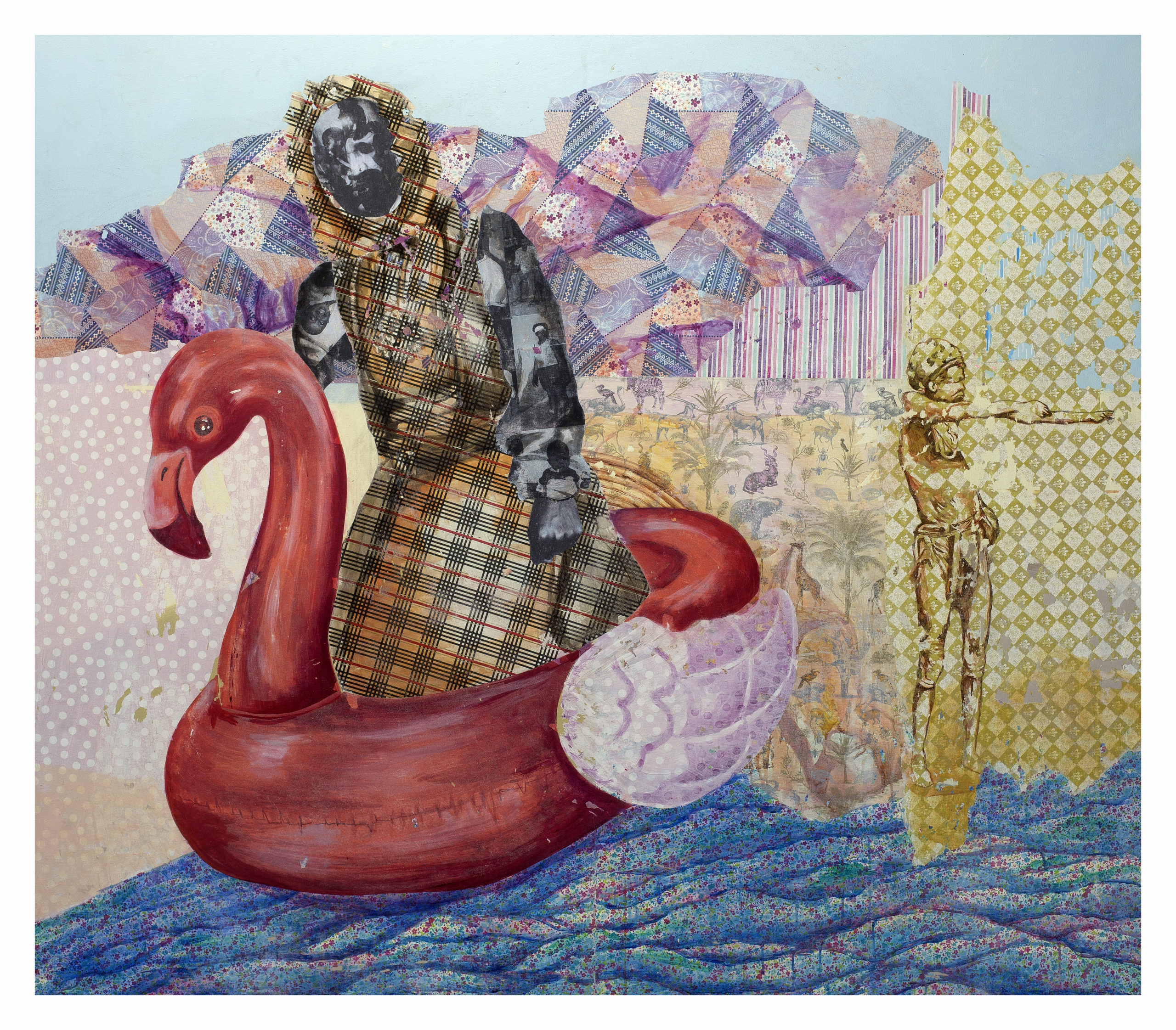
Phumlani Ntuli, The Hawker, 2021. mixed media collage, paper transfer and acrylic on canvas.
Photography by Solomon Moremong. Image courtesy of the artist.
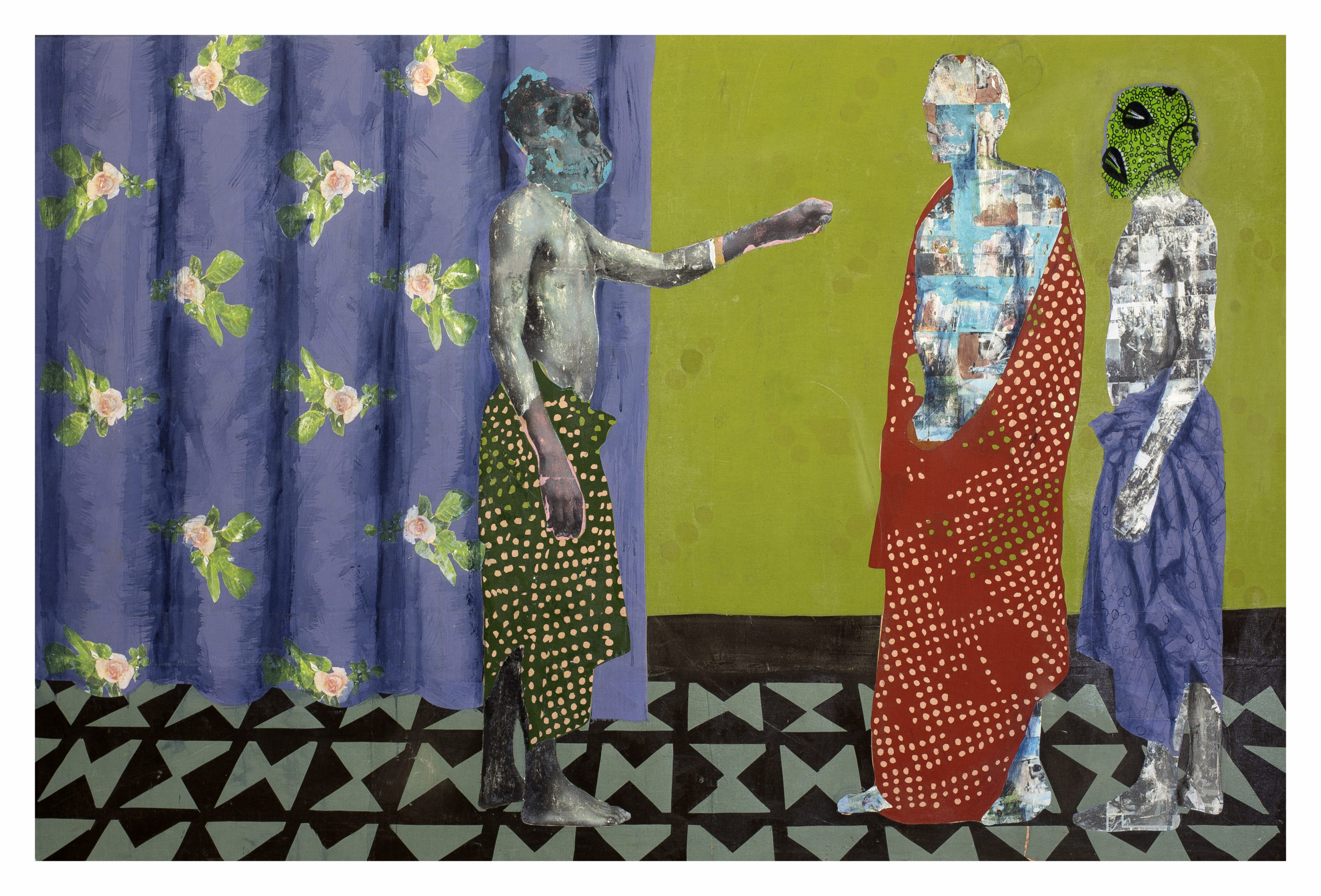
Phumlani Ntuli, Stolen Songs, 2019. mixed media collage, paper transfer, linen and acrylic on canvas.
Photography by Solomon Moremong. Image courtesy of the artist.

Phumlani Ntuli, Camouflage I, 2021. mixed media collage, paper transfer and acrylic on canvas.
Photography by Solomon Moremong. Image courtesy of the artist.
CREDITS
Photography by Solomon Moremong. Images courtesy of the artist.
The solo exhibition A navigation guide to Kwanqingetshe took place at Bag Factory from 29 May – 23 June 2021.
Click here to access the catalogue.
